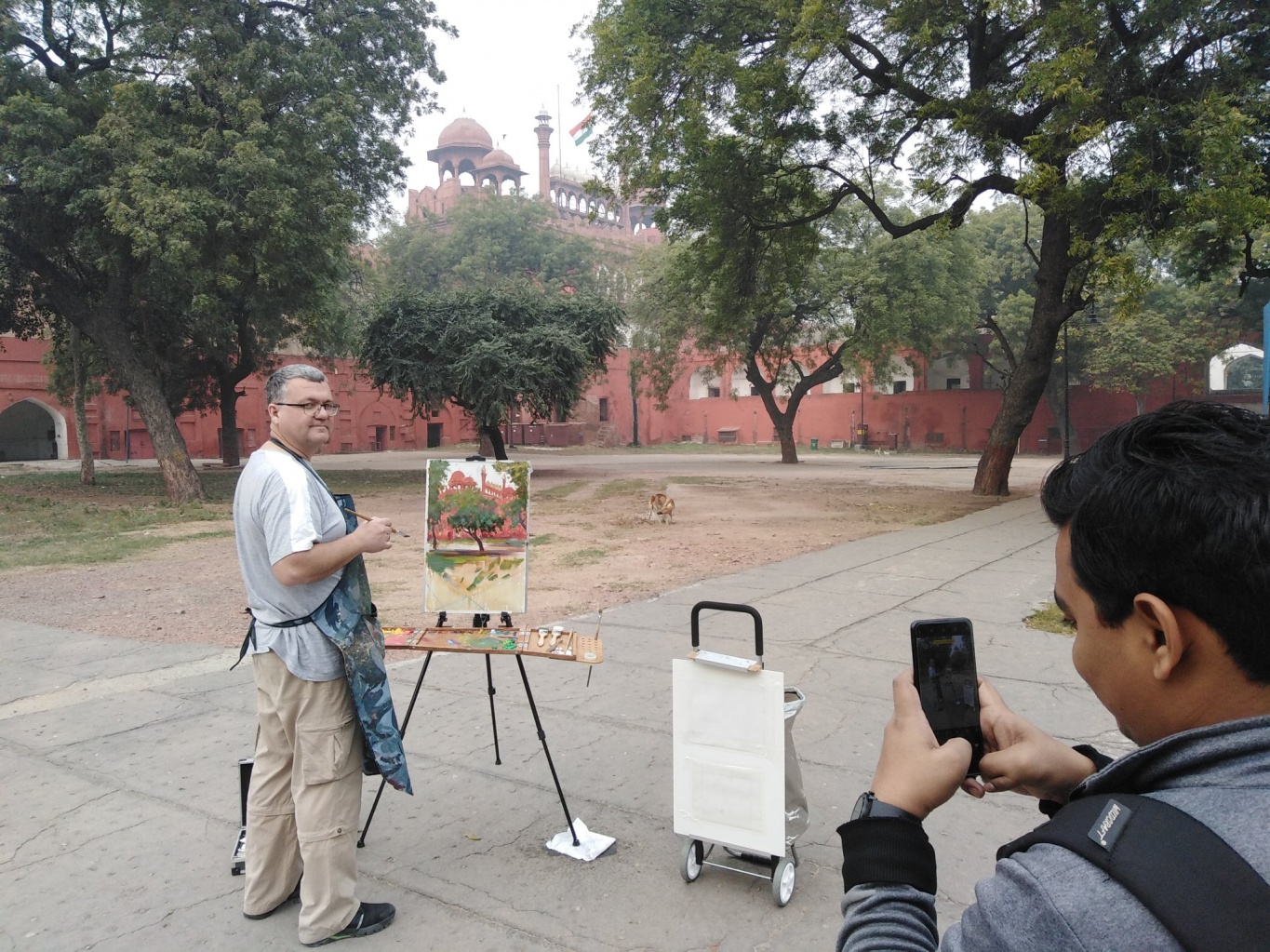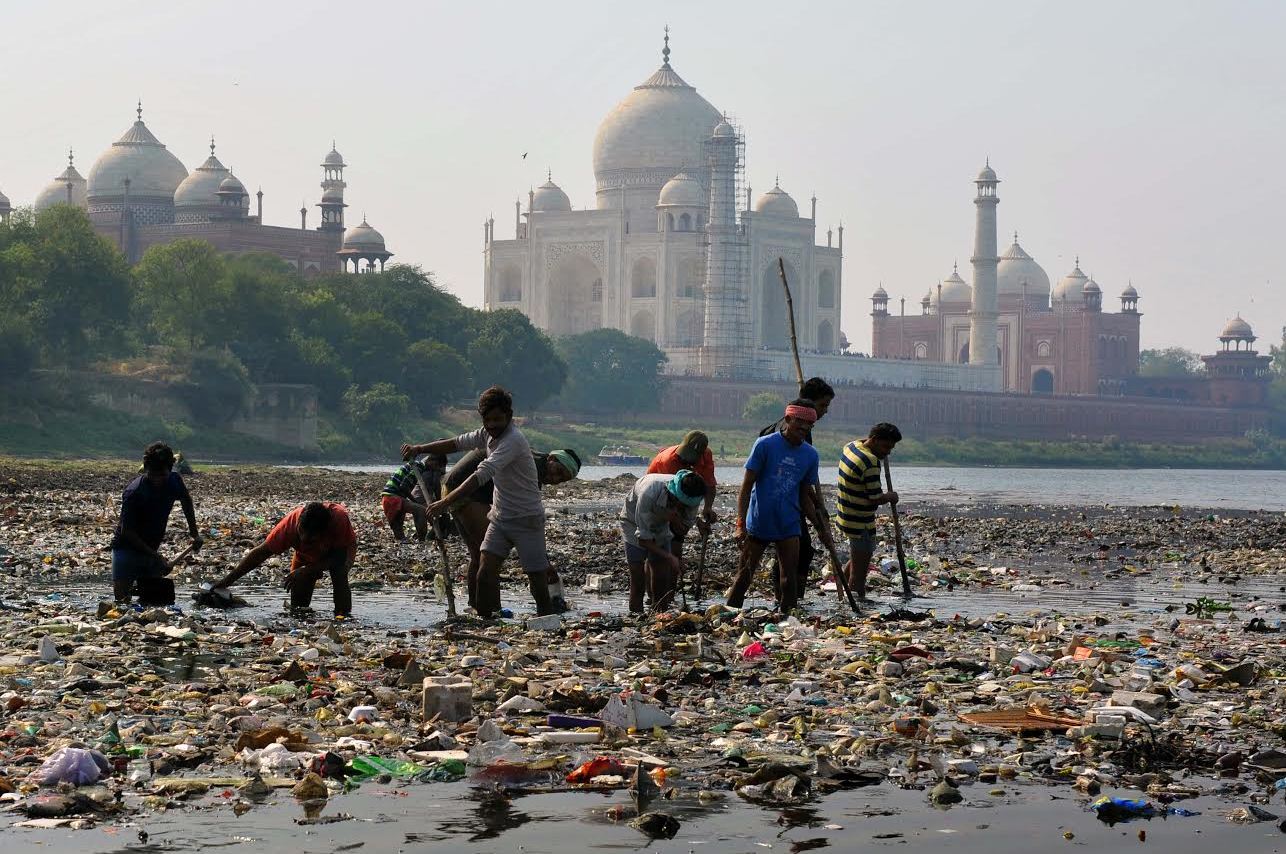
It is only by your own example that you can teach how to protect the world around you, including the beauty of nature and unique cultural monuments. 75 artists from different countries intend to oppose their art and enthusiasm to the environmental vandalism, joining their efforts in the Art Eco-19-20 project.
In an interview with EcoTourism Expert, Vitalii Vasilev, Director General of the Saint-Petersburg Centre Humanitarian Programs, the organizer and ideological inspirer of this unusual international socio-cultural project, tells us about it.
- The ART-ECO project is the result of the creative work of the Saint-Petersburg Centre for Humanitarian Programs and the Shryansy International company (Jaipur, Rajasthan, India). The participants in the project are the artists who do not just have to show - with their picturesque paintings - how bright and beautiful the world without garbage can be. They will become an example of a careful attitude to the environment. In the places where plein air sessions are held at the unique historical sites of Hindustan, the artists and Indian students will first clean the territory in the presence of the media to show that they need the volunteer assistance in doing this. Only then, the painters will depict the nature free of garbage and various litter in their paintings, and later on, their paintings will be displayed at the exhibitions in various cities of India.
- This format is quite unusual. How did you come up with the idea to combine the art and environmental protection?
- The idea to use the plein air sessions to solve the environment-related social and cultural tasks came during the visit to the Sagar temple complex located in the suburbs of Bikaner. We are already used to seeing litter in the streets of the Indian cities. But the fact that such a unique historical object can be in absolutely poor condition was simply shocking!

Project locations were selected with particular care so that they were, above all, spectacular and attractive objects for the artists to paint, as well as were historical sites that needed volunteer help with garbage collection.
- The scale of the planned cleaning action is impressive ...
- The Art Eco 19-20 project is a complex cascade of various events, with a very rich programme. Pay attention to the numbers: 100 days of the project; 18 member countries; 75 artists; 13 Indian cities involved in it, to say nothing of the radial trips to the surrounding towns and historical and cultural sites located in five states of India.

The international socio-cultural ‘Art Eco-19-20’ project received a moral and practical support from the local municipalities and public organizations in each city of the entire project route - Ajmir, Baroda, Bikaner, Bundi, Bhilwara, Dahanu, Dehradun, Jodhpur, Jaipur, Kota, New Delhi, Saputara, Udaipur, and also is held with the participation of the Indian National Lalit Kala Academy, the India-Tourism company, the Lalit Kala Academy of Rajasthan and the head-office of Rajasthan Tourism.
- A significant part of the organizational efforts, apparently, will be focused on solving the educational tasks and outreach activities?
- The project is diversified, it includes about a dozen press conferences, meet-the-artist events, workshop sessions and master classes for students of schools and art professional educational institutions of India, special shows based on the results of plein air sessions, as well as exhibitions reporting on the results of the entire project in different cities of Hindustan.
Thus, we hope that this action will draw the attention of the general public to the issues of careful attitude of the people in the areas where they live, observing the norms of the environmental behavior in the cultural environment, on the territory of cultural and historical sites and memorials. Also, an important task is the involvement of creative youth in the socially responsible activities, the expansion of artistic themes, forms and methods to be used in strengthening the civil responsibility, improving the environmental culture and level of involvement of the young generation in the nature conservation.
- Where is it possible to get acquainted with the work of the artists - creators and volunteers?
- The outcome of our plein air sessions will be shown in each of the 12 cities where the artists will work, as well as in the capital of Rajasthan, Jaipur, and at the International Centre in New Delhi. In addition, of course, each of the participants will exhibit paintings created in India at their exhibitions in 18 countries of the world, including Russia, in 19 cities from which the artists came.

The aphorism of the philosopher, Indian political and social activist Mahatma Gandhi, stating that the culture cannot exist without an ecological culture, and the ecological culture cannot exist in a climate of the lack of culture at all, expresses the current situation in the world with regard to the problems of our entire civilization and the environmental problems, in particular.
Nowadays, as never before, there is an urgent need to expand the means and ways of strengthening the environmental education foundations, as well as of ecological thinking and introducing environmentally oriented reflective-assessment standards into the public consciousness. Today it is high time to stop being an outsider and start taking an active part in the real life situations to ensure the conservation of our nature and the ecological quality of life.
